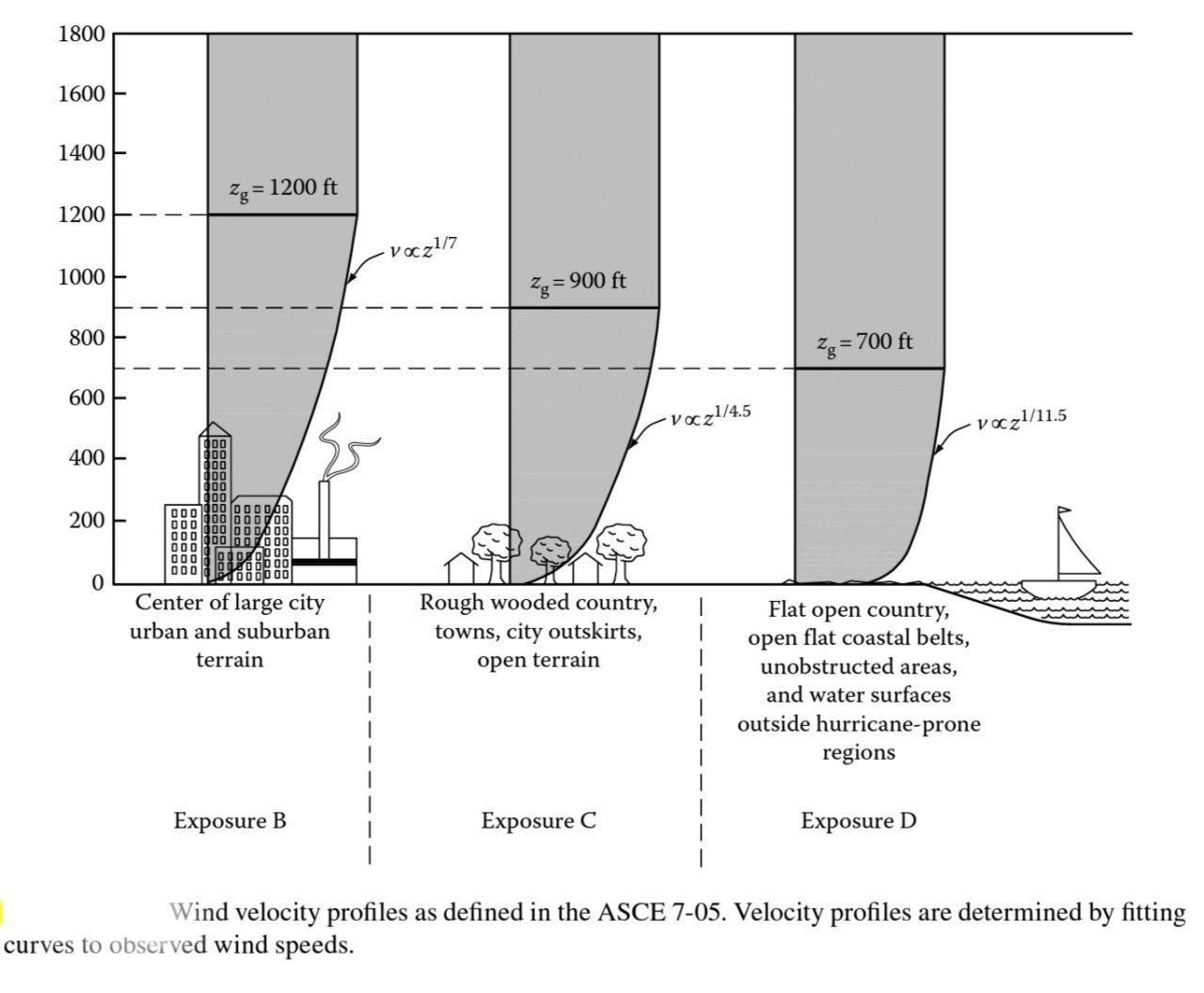Variation of Wind Velocity with Height
The roughness of the earth’s surface which causes drag, converts some of the wind’s energy into mechanical turbulence. Since turbulence is generated at the surface, surface wind speed is much less than wind speed at high levels. Turbulence includes vertical as well as horizontal air movement and hence the effect of surface frictional drag is propagated upward. The effect of frictional drag gradually decreases with height, and at gradient level (around 700–1200 ft) frictional drag effect is negligible. Also, wind speed profile depends mainly on the degree of surface roughness, caused by buildings, trees, and other projections.
The viscosity of air reduces its velocity adjacent to the earth’s surface to almost zero. The maximum retarding effect occurs in wind layers nearest to the ground. These layers in turn successively slow the higher layers. Thus the effect of slowdown reduces at each layer as the height increases, and eventually becomes negligible. The height at which the slowdown effect ceases to exist is called gradient height, and the corresponding velocity, gradient velocity. This characteristic increase of wind velocity with height is evidenced by higher design pressures specified at higher elevations.

